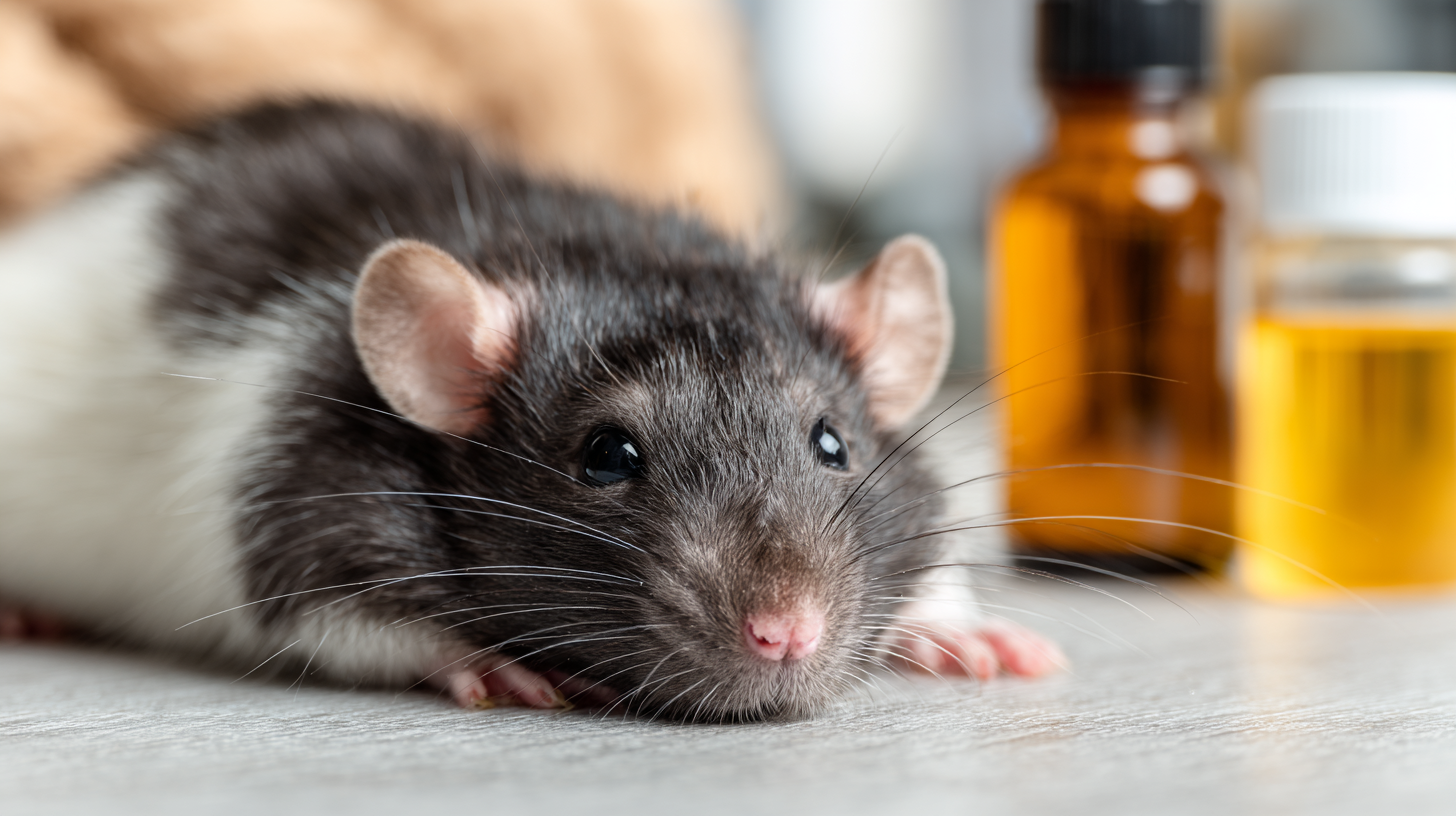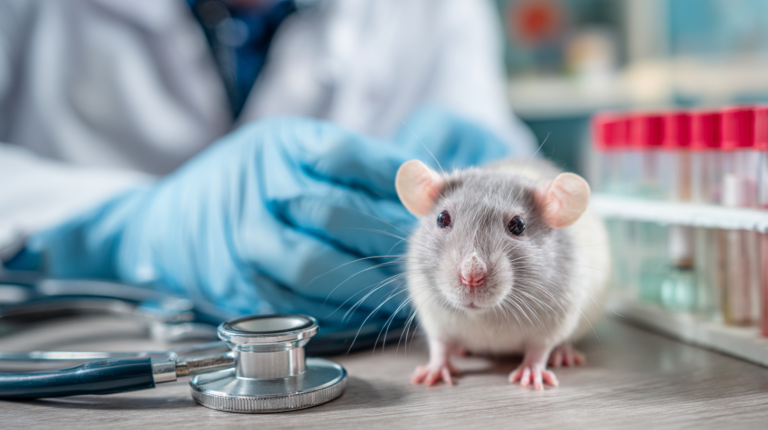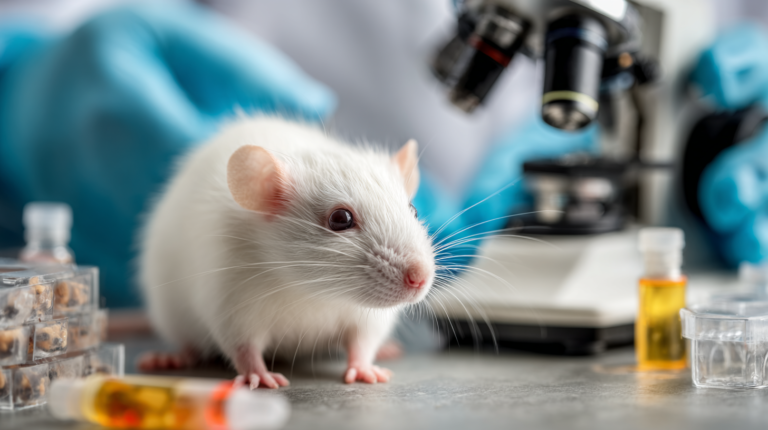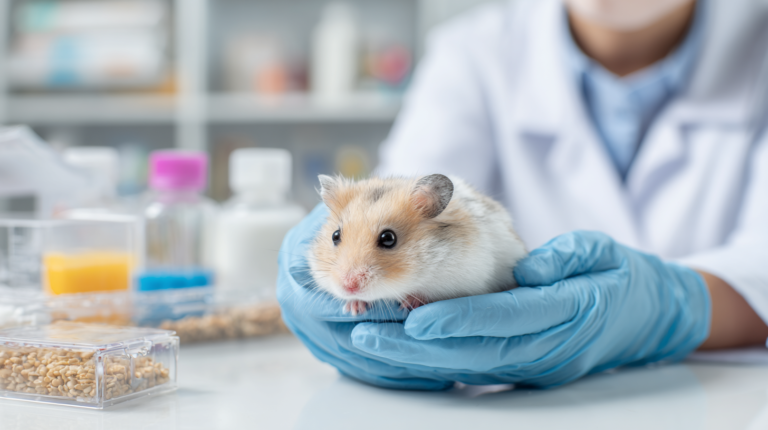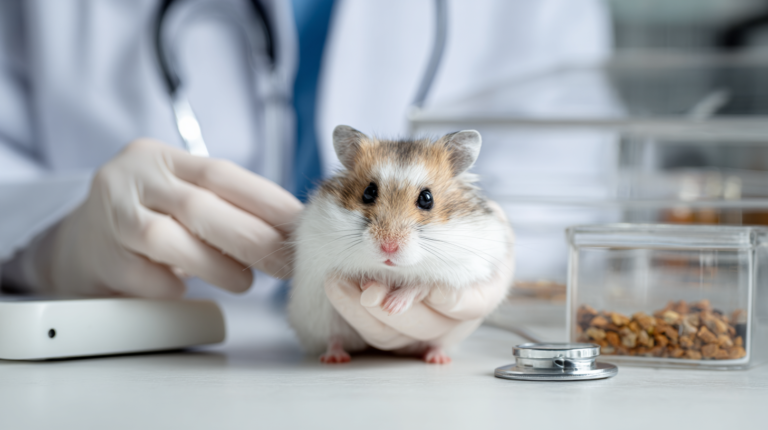Learn about rodent poisoning dangers to pets. Discover 5 common household toxins, symptoms, and prevention tips to keep your furry friends safe from accidental ingestion.
Table of Contents
Every year, thousands of pets fall victim to accidental rodent poisoning, turning what should be a simple pest control solution into a life-threatening emergency. As pet owners increasingly rely on rodenticides to manage unwanted visitors, the risk of secondary poisoning in cats and dogs has reached alarming levels. Understanding the hidden dangers lurking in common household pest control products could mean the difference between life and death for your beloved companion.
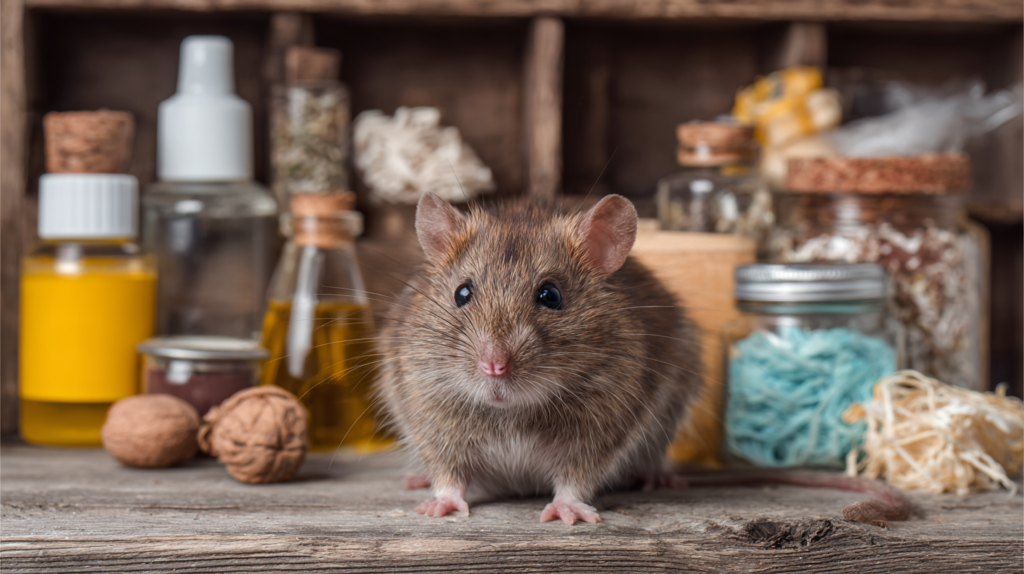
Rodent poisoning occurs when pets consume either the poison directly or ingest poisoned rodents, creating a toxic chain reaction that can devastate multiple organ systems. With over 15,000 reported cases of pet poisoning from rodenticides annually in the United States alone, according to the ASPCA Animal Poison Control Center, this represents one of the most preventable yet persistent threats to pet health in modern households.
The complexity of rodent poisoning lies not just in its immediate effects, but in the delayed onset of symptoms that can mislead pet owners into thinking their animals are safe. By the time visible signs appear, the damage may already be irreversible, making prevention and early recognition absolutely critical for pet survival.
Understanding the Mechanism:
| Rodenticide Type | Active Ingredient | Mechanism of Action | Toxicity Level | Symptom Onset |
|---|---|---|---|---|
| Warfarin-Based Anticoagulants | Warfarin, Diphacinone | Prevents blood clotting by blocking Vitamin K synthesis | Moderate to High | 2-5 days |
| Second-Generation Anticoagulants | Bromadiolone, Brodifacoum | More potent anticoagulant effect, longer-lasting | Very High | 2-7 days |
| Cholecalciferol (Vitamin D3) | Vitamin D3 | Causes calcium buildup leading to organ failure | Extremely High | 12-36 hours |
| Bromethalin Neurotoxins | Bromethalin | Disrupts cellular energy production in the brain | Extremely High | 2-24 hours |
| Zinc Phosphide | Zinc Phosphide | Releases toxic phosphine gas in stomach acid | Very High | 15 minutes – 4 hours |
Rodent poisoning operates through several distinct mechanisms, each targeting different physiological systems in ways that can prove fatal to pets. The most common rodenticides fall into categories based on their active ingredients and method of action, with anticoagulants representing the vast majority of products available to consumers.
Anticoagulant rodenticides work by inhibiting vitamin K recycling in the liver, effectively preventing the production of clotting factors essential for normal blood coagulation. This process doesn’t happen immediately; instead, it creates a delayed effect that can take anywhere from 24 hours to several days to manifest. During this latency period, pets may appear completely normal while their bodies gradually lose the ability to form life-saving blood clots.
The secondary poisoning pathway presents an equally dangerous threat. When pets consume rodents that have ingested poison, they receive concentrated doses of toxins that have accumulated in the prey’s tissues. This bioaccumulation effect means that a single poisoned mouse or rat can contain lethal amounts of rodenticide, particularly dangerous for smaller pets or those with compromised health.
Dr. Sarah Mitchell, a veterinary toxicologist at the University of California Davis, explains: “The insidious nature of rodent poisoning lies in its silent progression. Pet owners often don’t realize their animal has been exposed until bleeding becomes visible, at which point the pet may have already lost significant blood volume.”
Modern rodenticides are specifically designed to be palatable to encourage consumption by target pests. Unfortunately, this palatability extends to pets, who may actively seek out these products due to their appealing taste and smell. The addition of attractants like peanut butter, molasses, or grain-based carriers makes these products particularly enticing to curious pets.
The Big 5: Common Household Rodenticides That Threaten Pet Safety
1. Warfarin-Based Anticoagulants
Warfarin remains one of the most prevalent active ingredients in household rodenticides, despite being largely replaced by newer formulations in professional pest control. These first-generation anticoagulants require multiple feedings to achieve lethal doses in rodents, but a single exposure can prove dangerous to pets due to their smaller size and different metabolic rates.
The mechanism of warfarin poisoning involves the disruption of the vitamin K cycle, preventing the synthesis of clotting factors II, VII, IX, and X. This creates a cascade effect where the pet’s blood gradually loses its ability to clot, leading to internal bleeding that may not become apparent until 2-5 days after exposure.
Common brand names containing warfarin include some formulations of d-CON and various generic products available at hardware stores. The widespread availability of these products makes them a persistent threat in households where pets roam freely.
Signs of warfarin poisoning typically begin with subtle changes in behavior, including lethargy and decreased appetite. As the condition progresses, pets may develop pale gums, difficulty breathing, abdominal distension, and visible bleeding from the nose, mouth, or other orifices. Without immediate veterinary intervention, affected pets can experience fatal hemorrhaging within 24-48 hours of symptom onset.
2. Bromadiolone and Brodifacoum (Second-Generation Anticoagulants)
Second-generation anticoagulants represent the most potent and dangerous category of rodenticides commonly found in households. Bromadiolone and brodifacoum are significantly more toxic than their first-generation counterparts, requiring only a single feeding to achieve lethal doses in target species.
These “super-warfarins” have extended half-lives in the body, meaning they persist in tissues for weeks or even months after exposure. This prolonged presence creates ongoing toxicity that can lead to delayed complications even after apparent recovery from initial symptoms.
The increased potency of second-generation anticoagulants means that even minimal exposure can prove fatal to pets. A dog weighing 50 pounds may suffer severe poisoning from consuming just 0.5 grams of a product containing brodifacoum, roughly equivalent to a single bait block.
Products containing these ingredients are often marketed as “single-dose” or “fast-acting” rodenticides, appealing to consumers who want quick results. However, this very efficiency makes them exponentially more dangerous to non-target species, including pets and wildlife.
3. Cholecalciferol (Vitamin D3) Rodenticides
Cholecalciferol-based rodenticides represent a different class of poison that works by causing vitamin D toxicity, leading to dangerous elevation of calcium levels in the blood. This hypercalcemia disrupts normal cellular function throughout the body, with particularly severe effects on the kidneys and cardiovascular system.
Unlike anticoagulant poisoning, vitamin D3 toxicity doesn’t cause bleeding disorders. Instead, it creates a condition where calcium deposits form in soft tissues, leading to organ failure and death. The kidneys are typically the first organs affected, with pets developing acute kidney failure within 12-36 hours of exposure.
Early symptoms of cholecalciferol poisoning include excessive thirst and urination, vomiting, loss of appetite, and depression. As the condition progresses, pets may develop seizures, muscle weakness, and eventually coma. The prognosis for vitamin D3 poisoning is often poor, even with aggressive treatment.
These products are sometimes marketed as “safer” alternatives to traditional anticoagulants, but this perception is dangerously misleading. While they may pose less risk to wildlife through secondary poisoning, they remain extremely toxic to pets through direct consumption.
4. Bromethalin-Based Neurotoxins
Bromethalin represents a newer class of rodenticide that works by disrupting cellular energy production in the nervous system. This neurotoxin causes swelling of brain tissue, leading to increased intracranial pressure and subsequent neurological symptoms.
The mechanism of bromethalin poisoning involves the inhibition of ATP production in nerve cells, effectively starving the nervous system of energy. This creates a cascade of cellular damage that affects motor function, coordination, and eventually consciousness.
Symptoms of bromethalin poisoning typically appear within 2-24 hours of exposure and include muscle tremors, seizures, loss of coordination, and paralysis. Unlike other forms of rodent poisoning, bromethalin toxicity often presents with obvious neurological signs that can help veterinarians identify the specific type of poisoning.
The rapid onset of symptoms associated with bromethalin poisoning can be both advantageous and problematic. While it allows for quicker identification of the problem, it also means that pets can deteriorate rapidly, requiring immediate emergency intervention.
5. Zinc Phosphide Formulations
Zinc phosphide is a fast-acting rodenticide that produces phosphine gas when it comes into contact with stomach acid. This gas is highly toxic to cellular respiration, causing rapid death through respiratory failure and cardiovascular collapse.
The production of phosphine gas creates a secondary hazard for pet owners and veterinary staff, as the gas can be released from the pet’s stomach contents during vomiting or through gastric lavage procedures. This requires special handling protocols and ventilation considerations during treatment.
Symptoms of zinc phosphide poisoning appear rapidly, typically within 15 minutes to 4 hours of ingestion. Initial signs include vomiting, diarrhea, abdominal pain, and difficulty breathing. The condition progresses quickly to shock, collapse, and death if not treated immediately.
One characteristic feature of zinc phosphide poisoning is the presence of a garlic-like odor on the pet’s breath or in vomit, caused by the phosphine gas production. This distinctive smell can help veterinarians identify the specific type of poisoning and implement appropriate treatment protocols.
Recognizing the Warning Signs: Symptoms of Rodent Poisoning in Pets
Early recognition of rodent poisoning symptoms can dramatically improve the chances of successful treatment and recovery. However, the diverse mechanisms of action among different rodenticides create a complex symptom profile that can challenge even experienced pet owners.
Immediate Symptoms (0-6 Hours Post-Exposure)
The first few hours after rodent poison ingestion may present with subtle signs that are easily dismissed as minor digestive upset. Pets may exhibit mild lethargy, decreased appetite, or slight changes in behavior that don’t immediately suggest poisoning.
Vomiting represents one of the most common early symptoms, particularly with zinc phosphide and cholecalciferol poisoning. However, the absence of vomiting doesn’t rule out poisoning, as anticoagulant rodenticides rarely cause immediate gastrointestinal symptoms.
Increased thirst and urination can occur early in cholecalciferol poisoning as the kidneys attempt to process excess calcium. This symptom is often mistaken for normal variation in drinking behavior, particularly in warmer weather.
Acute Symptoms (6-24 Hours Post-Exposure)
As toxins begin to affect organ systems, symptoms become more pronounced and concerning. Anticoagulant poisoning may begin to show signs of bleeding disorders, including pale gums, weakness, and difficulty breathing due to internal bleeding.
Neurological symptoms associated with bromethalin poisoning typically emerge during this timeframe. Pets may develop tremors, loss of coordination, or unusual behavior patterns that suggest central nervous system involvement.
Gastrointestinal symptoms often intensify during the acute phase, with persistent vomiting, diarrhea, and abdominal pain becoming more evident. These symptoms can lead to dehydration and electrolyte imbalances that complicate treatment.
Delayed Symptoms (1-5 Days Post-Exposure)
The delayed onset of symptoms in anticoagulant poisoning creates a false sense of security for pet owners. By the time visible bleeding occurs, pets may have already lost significant blood volume, making treatment more challenging and prognosis less favorable.
Kidney failure symptoms become apparent in cholecalciferol poisoning during this timeframe, with pets developing severe dehydration, inability to urinate, and metabolic acidosis. These symptoms indicate significant organ damage that may be irreversible.
Respiratory distress can develop as a late symptom in multiple types of rodent poisoning, either due to internal bleeding affecting the lungs or as a result of organ failure and metabolic dysfunction.
Critical Symptoms Requiring Emergency Intervention
Certain symptoms indicate immediate life-threatening situations that require emergency veterinary care. These include visible bleeding from any orifice, severe difficulty breathing, seizures, collapse, or loss of consciousness.
Pale or white gums suggest severe anemia from internal bleeding, while blue-tinged gums indicate oxygen deprivation requiring immediate respiratory support. Both conditions represent medical emergencies with narrow windows for successful intervention.
Abdominal distension may indicate internal bleeding or organ swelling, both of which can rapidly progress to fatal complications. Any sudden change in abdominal size or shape warrants immediate veterinary evaluation.
Emergency Response: What to Do If Your Pet Ingests Rodent Poison
The first moments after discovering potential rodent poison ingestion are critical for your pet’s survival. Quick, appropriate action can mean the difference between full recovery and fatal complications, but improper responses can actually worsen the situation.
Immediate Assessment and Safety
Before taking any action, ensure your own safety and that of other household members. If you suspect zinc phosphide poisoning, be aware that phosphine gas may be present in the pet’s breath or vomit, requiring good ventilation and potential evacuation of enclosed spaces.
Document the suspected poison type, amount consumed, and time of ingestion if possible. Gather any remaining poison containers or packaging to bring to the veterinary clinic, as ingredient identification is crucial for proper treatment selection.
Remain calm and move deliberately. Panicked responses can increase your pet’s stress levels, potentially accelerating toxin absorption or worsening symptoms. Your composed demeanor will also help you make better decisions during this critical time.
Contacting Professional Help
Call your veterinarian or emergency animal hospital immediately, even if your pet appears asymptomatic. Many rodent poisons have delayed effects, and early intervention is almost always more successful than waiting for symptoms to develop.
The ASPCA Animal Poison Control Center (1-888-426-4435) provides 24/7 consultation services for poisoning emergencies. Their toxicology experts can provide specific guidance based on the type of poison involved and your pet’s individual circumstances.
When calling for help, provide specific information about your pet’s species, breed, weight, age, and current symptoms. Also share details about the suspected poison, including brand name, active ingredients, estimated amount consumed, and time since ingestion.
What NOT to Do
Never induce vomiting unless specifically instructed by a veterinary professional. Some types of rodent poisoning can be worsened by vomiting, and the timing of when to induce vomiting is critical for safety and effectiveness.
Avoid giving milk, bread, or other home remedies that are commonly suggested for poisoning cases. These substances can actually increase toxin absorption in some cases or interfere with proper veterinary treatment.
Don’t attempt to neutralize the poison with household products like baking soda or vinegar. These substances can create dangerous chemical reactions or mask important diagnostic symptoms that veterinarians need to assess.
Safe Transport to Veterinary Care
Keep your pet warm and calm during transport to the veterinary clinic. Shock is a common complication of rodent poisoning, and maintaining body temperature is crucial for circulation and organ function.
Bring any remaining poison containers, packaging, or suspected bait materials with you to the clinic. This information is invaluable for veterinary professionals in determining the specific type of poisoning and appropriate treatment protocols.
If your pet is vomiting, position them in a way that prevents aspiration of vomit into the lungs. This may require keeping the head elevated or turned to one side during transport.
Professional Treatment Options: What Veterinarians Can Do
| Poison Type | Primary Symptoms | Secondary Effects | Severity Level | Time to Emergency |
|---|---|---|---|---|
| Anticoagulants |
|
|
High | Immediate |
| Cholecalciferol |
|
|
Severe | Within hours |
| Bromethalin |
|
|
Severe | Immediate |
| Zinc Phosphide |
|
|
Severe | Within minutes |
Modern veterinary medicine offers several effective treatment options for rodent poisoning, but success depends heavily on early intervention and accurate identification of the specific toxin involved. Treatment protocols vary significantly based on the type of poison, amount consumed, and time elapsed since ingestion.
Initial Stabilization and Assessment
Emergency veterinary care begins with a comprehensive assessment of your pet’s vital signs, mental state, and overall condition. Blood pressure, heart rate, respiratory rate, and temperature provide crucial baseline measurements that guide treatment decisions.
Diagnostic blood work typically includes a complete blood count, chemistry panel, and coagulation studies to assess organ function and identify specific effects of the poisoning. These tests help veterinarians determine the severity of toxicity and monitor treatment progress.
Intravenous fluid therapy often begins immediately to support circulation, maintain blood pressure, and aid in toxin elimination through the kidneys. This supportive care is crucial for pets experiencing shock or dehydration from vomiting and diarrhea.
Decontamination Procedures
Gastric decontamination may be performed if the pet presents within 2-4 hours of ingestion and is not showing severe symptoms. This process involves inducing vomiting or performing gastric lavage to remove unabsorbed poison from the stomach.
Activated charcoal administration can help bind remaining toxins in the gastrointestinal tract, preventing further absorption. However, this treatment is only effective for certain types of rodenticides and must be administered under veterinary supervision.
The timing of decontamination procedures is critical, as some methods become ineffective or even dangerous once toxins have been absorbed into the bloodstream. Veterinarians must carefully weigh the risks and benefits of each intervention.
Specific Antidotes and Treatments
Vitamin K therapy represents the gold standard treatment for anticoagulant poisoning. High doses of vitamin K1 can bypass the blocked recycling pathway and restore normal clotting function within 12-24 hours of administration.
Cholecalciferol poisoning requires aggressive treatment with intravenous fluids, diuretics, and medications to reduce calcium levels. Calcitonin and bisphosphonates may be used to prevent calcium deposition in organs.
Bromethalin poisoning has no specific antidote, making supportive care and management of neurological symptoms the primary focus. Treatment may include anti-seizure medications, osmotic agents to reduce brain swelling, and intensive monitoring.
Supportive Care and Monitoring
Blood transfusions may be necessary for pets with severe anemia from internal bleeding. Fresh whole blood or packed red blood cells can be life-saving for animals with critically low blood counts.
Oxygen therapy supports pets with respiratory distress, whether from internal bleeding affecting the lungs or from direct toxin effects on respiratory function. Mechanical ventilation may be required in severe cases.
Nutritional support becomes important during extended treatment periods, as many pets lose their appetite during recovery. Feeding tubes or intravenous nutrition may be necessary to maintain proper nutrition and support healing.
Prevention Strategies: Creating a Pet-Safe Environment
| Treatment Phase | Immediate Actions (0-2 hours) | Professional Treatment | Monitoring Period | Recovery Outlook |
|---|---|---|---|---|
|
Emergency Response
|
Critical: Every minute counts
|
Gastric decontamination
Activated charcoal administration
IV fluid therapy initiation
|
Continuous vital sign monitoring for 2-4 hours | Good if treated early |
|
Anticoagulant Treatment
|
|
Vitamin K1 therapy (oral/injection)
Blood clotting tests (PT/PTT)
Blood transfusion if needed
|
Weekly blood tests for 2-6 weeks | Excellent with treatment |
|
Cholecalciferol Protocol
|
|
Aggressive IV fluid therapy
Diuretics (furosemide)
Calcium level monitoring
Kidney function tests
|
Daily monitoring for 1-2 weeks, then weekly | Variable – depends on damage |
|
Bromethalin Management
|
No specific antidote available
|
Supportive care only
Anti-seizure medications
Brain pressure management
Nutritional support
|
Intensive monitoring for several days to weeks | Poor – often permanent damage |
|
Zinc Phosphide Care
|
Rapid onset – act immediately
|
Oxygen therapy
Gastric lavage (careful)
Supportive care
Liver function monitoring
|
24-48 hour intensive care monitoring | Fair if treated quickly |
Preventing rodent poisoning requires a comprehensive approach that addresses both pest control needs and pet safety concerns. The most effective prevention strategies involve eliminating access to rodenticides while implementing alternative pest management techniques.
Secure Storage and Placement
All rodenticides should be stored in locked cabinets or containers that are completely inaccessible to pets. Child-resistant packaging is not pet-resistant, and many pets can chew through plastic containers or manipulate mechanisms designed to keep children out.
Bait stations must be properly secured and designed to prevent pet access. Professional-grade bait stations with locking mechanisms provide better protection than simple plastic boxes that can be easily opened or destroyed by determined pets.
Placement of rodenticides should consider pet behavior patterns and access routes. Areas where pets regularly travel, sleep, or eat should be completely off-limits for any type of rodenticide placement.
Alternative Pest Control Methods
Snap traps and electronic traps provide effective rodent control without the risk of secondary poisoning. These devices kill rodents instantly, preventing them from consuming poison that could later affect pets.
Exclusion methods, including sealing entry points and removing food sources, offer long-term solutions that don’t rely on toxic substances. This approach addresses the root causes of rodent problems rather than just treating symptoms.
Integrated pest management combines multiple approaches to create comprehensive control programs. This might include exclusion, sanitation, trapping, and targeted use of professional-grade products in areas completely inaccessible to pets.
Environmental Management
Regular cleaning and food storage practices can significantly reduce rodent attraction to your home. Secure storage of pet food, bird seed, and other attractants eliminates primary food sources that draw rodents to your property.
Landscaping modifications can reduce rodent habitat around your home. Removing brush piles, trimming vegetation away from structures, and maintaining clean outdoor areas reduce rodent populations naturally.
Education and Awareness
Family members and visitors should be educated about the dangers of rodent poisoning and the importance of proper poison handling. This includes children who might not understand the risks associated with these products.
Pet sitters, dog walkers, and other pet care providers should be informed about the presence of any rodenticides on your property and understand proper safety protocols. Clear communication can prevent accidental exposure during your absence.
Regular property inspections can identify potential poison sources that might not be obvious, including neighboring properties where pets might have access to improperly secured rodenticides.
The Role of Professional Pest Control in Pet Safety
Professional pest control services can provide safer alternatives to homeowner-applied rodenticides while maintaining effective rodent management. These services offer expertise in product selection, application methods, and safety protocols that reduce risks to pets and family members.
Professional-Grade Products and Application
Licensed pest control professionals have access to products and application methods not available to consumers. These may include formulations that are less palatable to pets or application techniques that minimize exposure risks.
Professional application ensures proper placement of rodenticides in areas that are truly inaccessible to pets. Technicians understand animal behavior patterns and can identify placement locations that provide effective rodent control while maintaining pet safety.
Monitoring and maintenance programs provided by professional services ensure that bait stations remain secure and effective over time. Regular inspections can identify potential problems before they become dangerous situations.
Integrated Pest Management Approaches
Professional services can implement comprehensive integrated pest management programs that rely less heavily on rodenticides. These programs combine multiple control methods to achieve better results with reduced toxin use.
Exclusion services performed by professionals can provide long-term solutions that eliminate the need for ongoing rodenticide use. Proper sealing of entry points and habitat modification can prevent rodent problems from recurring.
Risk Assessment and Customized Solutions
Professional pest control services can assess your specific situation and develop customized control programs that account for pet presence and behavior patterns. This personalized approach provides better protection than generic consumer products.
Regular communication with professional services ensures that treatment protocols can be adjusted based on changing circumstances, such as new pets, changes in pet behavior, or seasonal variations in rodent pressure.
Long-Term Health Implications and Recovery
Recovery from rodent poisoning can be a lengthy process that extends far beyond the initial emergency treatment period. Understanding the potential long-term effects helps pet owners provide appropriate ongoing care and monitor for delayed complications.
Organ Function Recovery
Liver function may be permanently impaired following severe anticoagulant poisoning, requiring ongoing monitoring and dietary modifications. Some pets may need lifelong vitamin K supplementation to maintain normal clotting function.
Kidney damage from cholecalciferol poisoning can result in chronic kidney disease, requiring special diets, medications, and regular veterinary monitoring. Early detection and management of kidney problems can slow progression and maintain quality of life.
Neurological damage from bromethalin poisoning may result in permanent disabilities, including seizure disorders, coordination problems, or cognitive changes. These conditions require ongoing management and may significantly impact quality of life.
Monitoring and Follow-Up Care
Regular blood work is essential for monitoring organ function and detecting delayed complications. The frequency of testing depends on the type of poisoning and the severity of initial symptoms.
Behavioral changes may persist long after apparent physical recovery, requiring patience and understanding from pet owners. Some pets may develop anxiety or fear responses related to their poisoning experience.
Quality of Life Considerations
Dietary modifications may be necessary to support compromised organ function or manage ongoing health conditions. Prescription diets can help reduce stress on damaged organs and improve overall health outcomes.
Exercise restrictions might be temporary or permanent, depending on the extent of organ damage and ongoing health status. Veterinary guidance is essential for determining appropriate activity levels during recovery.
Frequently Asked Questions
Everything you need to know about rodent poisoning in pets
Symptom onset varies significantly by poison type. Zinc phosphide can cause symptoms within 15 minutes to 4 hours, while anticoagulant poisoning may not show symptoms for 2-5 days. Bromethalin typically causes neurological symptoms within 2-24 hours, and cholecalciferol poisoning shows signs within 12-36 hours.
Recovery depends on the poison type, amount consumed, and how quickly treatment begins. With prompt veterinary care, many pets can recover completely from anticoagulant poisoning. However, some types like bromethalin may cause permanent neurological damage, and cholecalciferol can result in chronic kidney disease.
No rodenticide is completely safe for pets. Products marketed as “pet-safe” may be less toxic than alternatives, but they can still cause serious illness or death if consumed in sufficient quantities. The safest approach is to use non-toxic pest control methods or ensure complete inaccessibility of any rodenticides.
Elimination time varies by poison type. First-generation anticoagulants may clear within days to weeks, while second-generation anticoagulants can persist for months. Cholecalciferol effects can last weeks, and bromethalin may cause permanent damage. Complete elimination depends on the specific compound and the pet’s individual metabolism.
Contact your veterinarian immediately, even if your pet appears normal. Secondary poisoning from consuming poisoned rodents can be just as dangerous as direct ingestion. The concentration of toxins in poisoned prey can be lethal to pets, particularly smaller animals. Don’t wait for symptoms to appear before seeking help.
Never attempt to treat rodent poisoning with home remedies. Many well-intentioned treatments can actually worsen the situation or interfere with proper veterinary care. Only professional veterinary treatment can provide the specific antidotes and supportive care needed for different types of rodent poisoning.
No questions found matching your search. Try different keywords.
For more expert pet care tips and product recommendations, visit BlithePet.com your trusted source for pet wellness.
Conclusion
Rodent poisoning represents one of the most serious yet preventable threats to pet health in modern households. The five common household toxins discussed in this article—anticoagulants, cholecalciferol, bromethalin, zinc phosphide, and their various formulations—each pose unique dangers that require specific prevention strategies and treatment approaches.
The key to protecting your pets lies in understanding that effective pest control and pet safety are not mutually exclusive goals. Through proper storage, strategic placement, alternative control methods, and professional guidance, you can maintain a pest-free environment while keeping your beloved companions safe from harm.
Remember that early recognition of symptoms and immediate veterinary intervention can mean the difference between life and death for pets affected by rodent poisoning. Never hesitate to seek professional help when you suspect exposure, even if your pet appears normal. The silent nature of many rodenticides means that waiting for symptoms to appear can be a fatal mistake.
By implementing comprehensive prevention strategies and maintaining awareness of the risks associated with rodent control products, you can create a safer environment for your pets while effectively managing pest problems. The investment in pet-safe alternatives and professional services far outweighs the potential costs—both financial and emotional—of dealing with rodent poisoning emergencies.
Have a similar experience with your pet? Share it in the comments below !

